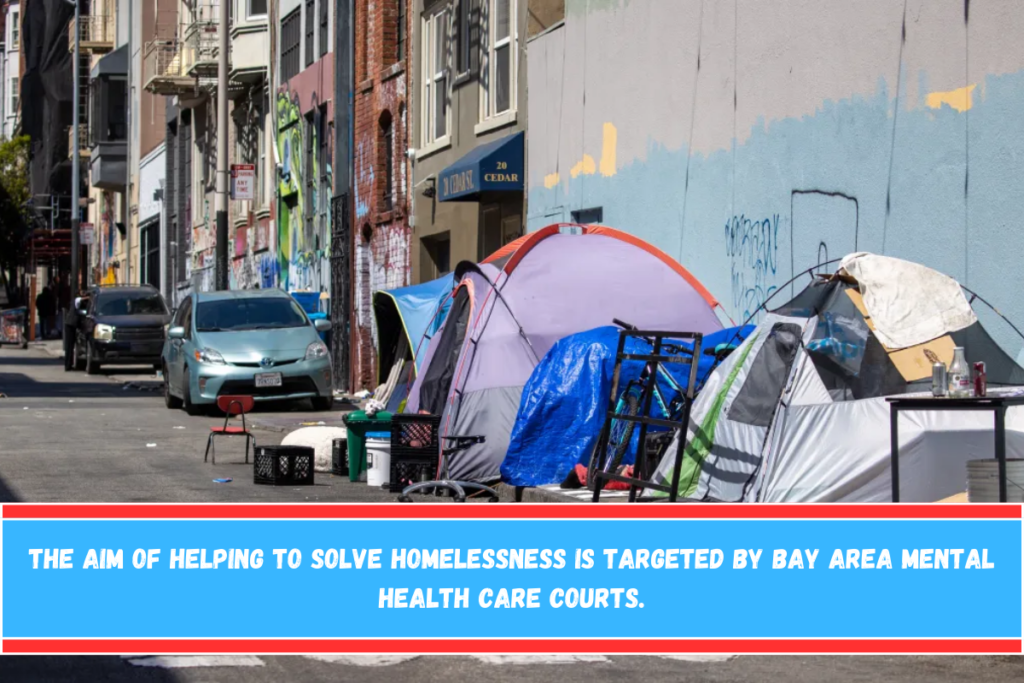As people in the Bay Area continue to face upsetting scenes of suffering on the streets, counties in the area are putting in place new state-mandated mental health courts to help people with major mental illnesses get treatment and a place to live.
Most counties in California have to start CARE courts by December 1. Gov. Gavin Newsom came up with the idea as part of a larger plan to improve the state’s mental health system.
The new civil court process is already up and running in some counties, like San Francisco and San Mateo. However, not many people have gone before a judge yet.
The CARE Court programs in Santa Clara, Alameda, and Contra Costa counties are set to begin at the start of next month.
Officials in the area say that the new model can help the most vulnerable people, but they also say that it’s not an answer for most homeless people.
The person in charge of the county’s CARE Court, Alameda County Superior Court Judge Sandra Bean, said, “It’s for people with the worst problems who haven’t gotten help before.” “A lot of families don’t know what to do with their loved ones.”
CARE Court works by letting family members, close friends, first responders, mental health professionals, and other people submit people to the program who are having serious mental health problems that are not being treated.
One of the things a judge does is work with the person to make a treatment plan. This plan might include medication, drug counseling, and a place in supportive housing or a residential care center. Plans are good for one year, and they can be extended once for another year.
Although judges can tell county health workers to treat people, they can’t make the people involved accept the services.
The goal is for people to choose to get help, but if someone refuses, a judge can put them in a conservatorship, which means that a court-appointed guardian makes choices about their health and could send them to a locked facility.
Officials say that the courts, along with the county outreach teams and health staff that help them, are only a small step toward fixing the state’s complicated problems with mental health, addiction, and homelessness.
They make it clear that the system is only for people with the worst conditions who can’t or won’t get help on their own.
It’s not clear how many people in the Bay Area might be able to use CARE Court. Statewide, officials say that between 7,000 and 12,000 people could apply.
This is a small number compared to California’s more than 181,000 homeless people. Even though participants don’t have to be homeless to join the program, it is expected that many of them will be.
Since CARE courts are going to be open all over the state, it’s clear that local leaders will need to do more to make the program work.
Last year, eight counties in California, including San Francisco, Los Angeles, and San Diego, opened the first CARE courts.
However, in the first six months, only about 450 people were sent to the programs. And a lot of those might not have earned it. When the court in San Mateo County opened this summer, it only let three people in for the first two months.
Officials say that the low number is partly because of the strict requirements for eligibility, which include having been diagnosed with severe schizophrenia or another dangerous psychotic disorder and not being getting treatment for it.
They also agree that people in the area need to learn more about how to send people to the program.
A spokesperson for the mental health advocacy group NAMI Santa Clara County, Rovina Nimbalkarm, said in an email that counties can prioritize public information sessions, workshops for first responders and health care workers, and direct collaborations with local groups.
Some disability rights activists, on the other hand, say that bringing people with mental illnesses before a judge—a new state law gives judges more power to refer them for a conservatorship—is a way to force them to get treatment that violates their civil rights and the rights of the weakest people in society.
“Unnecessary use of our court systems to force people to get medical care and social services,” Helen Tran, a senior attorney at the Western Center on Law and Poverty, said earlier this year.
As of last year, health officials from all over the state were also worried about the lack of mental health workers, supportive living units, and treatment beds for people in CARE Court.
A study from the public policy think tank RAND in 2021 said that California needed about 7,730 more treatment and residential care places.
Supporters of CARE Court point to Proposition 1, a $6.4 billion bond measure that voters narrowly passed in March. The money will pay for about 6,800 treatment beds and 4,350 units of supportive housing, but it won’t be given out for at least another year.
Some people also say that recent changes to Medi-Cal, the state’s program for low-income health care, should help pay for the treatment of CARE Court members.
The people in charge in Alameda County say they are ready to go as soon as the CARE Court opens. People can now learn how to report people to CARE Court through online meetings put on by the county superior court and health department starting this month.
The county will start taking reports online on November 28. Starting December 2, people can do so in person at local superior courts. The first day that Santa Clara and Contra Costa counties will take papers is December 1.


